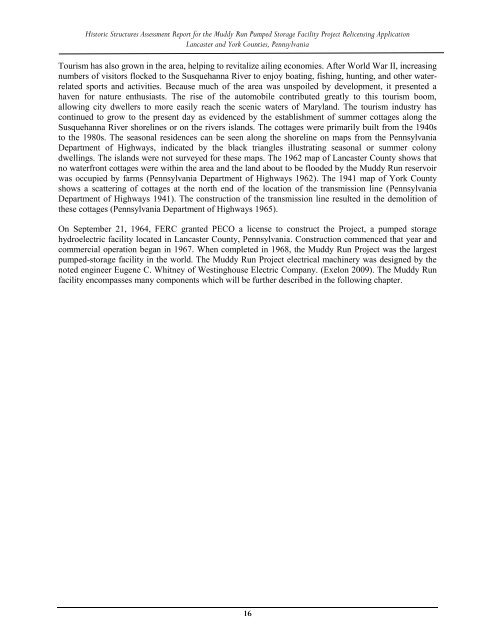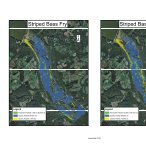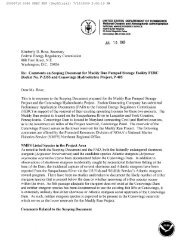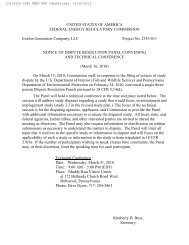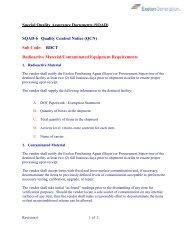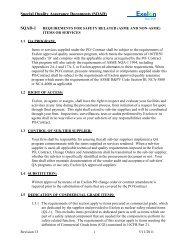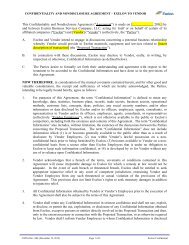Final Report Historical Structures Assessment Report for the Muddy ...
Final Report Historical Structures Assessment Report for the Muddy ...
Final Report Historical Structures Assessment Report for the Muddy ...
Create successful ePaper yourself
Turn your PDF publications into a flip-book with our unique Google optimized e-Paper software.
Historic <strong>Structures</strong> <strong>Assessment</strong> <strong>Report</strong> <strong>for</strong> <strong>the</strong> <strong>Muddy</strong> Run Pumped Storage Facility Project Relicensing Application<br />
Lancaster and York Counties, Pennsylvania<br />
Tourism has also grown in <strong>the</strong> area, helping to revitalize ailing economies. After World War II, increasing<br />
numbers of visitors flocked to <strong>the</strong> Susquehanna River to enjoy boating, fishing, hunting, and o<strong>the</strong>r waterrelated<br />
sports and activities. Because much of <strong>the</strong> area was unspoiled by development, it presented a<br />
haven <strong>for</strong> nature enthusiasts. The rise of <strong>the</strong> automobile contributed greatly to this tourism boom,<br />
allowing city dwellers to more easily reach <strong>the</strong> scenic waters of Maryland. The tourism industry has<br />
continued to grow to <strong>the</strong> present day as evidenced by <strong>the</strong> establishment of summer cottages along <strong>the</strong><br />
Susquehanna River shorelines or on <strong>the</strong> rivers islands. The cottages were primarily built from <strong>the</strong> 1940s<br />
to <strong>the</strong> 1980s. The seasonal residences can be seen along <strong>the</strong> shoreline on maps from <strong>the</strong> Pennsylvania<br />
Department of Highways, indicated by <strong>the</strong> black triangles illustrating seasonal or summer colony<br />
dwellings. The islands were not surveyed <strong>for</strong> <strong>the</strong>se maps. The 1962 map of Lancaster County shows that<br />
no waterfront cottages were within <strong>the</strong> area and <strong>the</strong> land about to be flooded by <strong>the</strong> <strong>Muddy</strong> Run reservoir<br />
was occupied by farms (Pennsylvania Department of Highways 1962). The 1941 map of York County<br />
shows a scattering of cottages at <strong>the</strong> north end of <strong>the</strong> location of <strong>the</strong> transmission line (Pennsylvania<br />
Department of Highways 1941). The construction of <strong>the</strong> transmission line resulted in <strong>the</strong> demolition of<br />
<strong>the</strong>se cottages (Pennsylvania Department of Highways 1965).<br />
On September 21, 1964, FERC granted PECO a license to construct <strong>the</strong> Project, a pumped storage<br />
hydroelectric facility located in Lancaster County, Pennsylvania. Construction commenced that year and<br />
commercial operation began in 1967. When completed in 1968, <strong>the</strong> <strong>Muddy</strong> Run Project was <strong>the</strong> largest<br />
pumped-storage facility in <strong>the</strong> world. The <strong>Muddy</strong> Run Project electrical machinery was designed by <strong>the</strong><br />
noted engineer Eugene C. Whitney of Westinghouse Electric Company. (Exelon 2009). The <strong>Muddy</strong> Run<br />
facility encompasses many components which will be fur<strong>the</strong>r described in <strong>the</strong> following chapter.<br />
16


